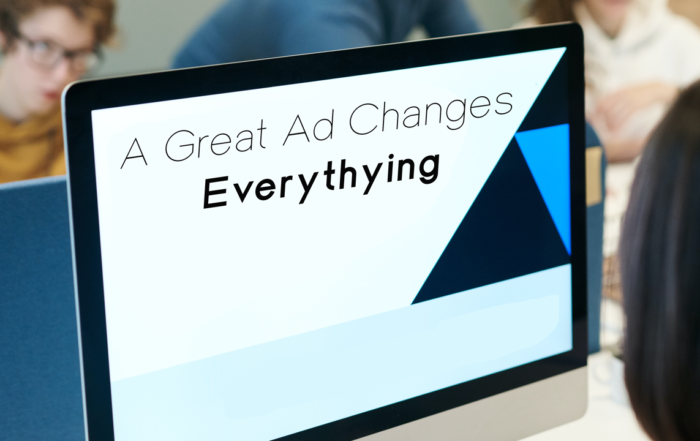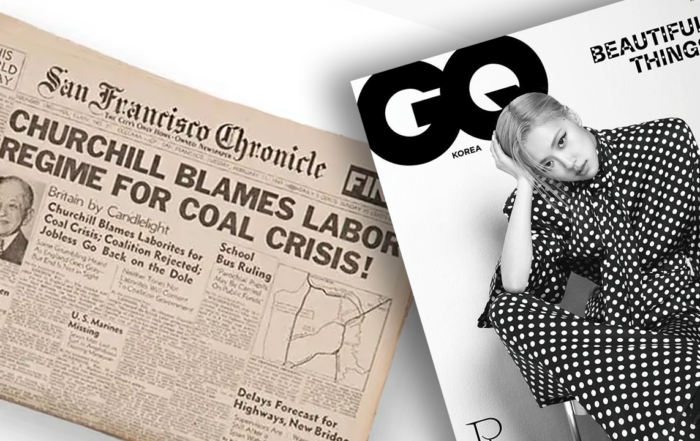The Power of Visual Advertising as a potent tool in the world of marketing and branding is indispensable. It capitalizes on the human brain’s preference for processing visual information over text, making it a highly effective way to communicate messages, evoke emotions, and drive consumer behavior. In addition, in this in-depth guide, we will explore the nuances of visual advertising, its impact, and how to create compelling visual campaigns.

Table of Contents
- Understanding Visual Advertising
- Types of Visual Advertising
- The Psychology of Visual Advertising
- Creating Effective Visual Advertising
- Visual Advertising Trends
- Visual Advertising Tools and Platforms
- 17 Visual Advertising Must-Do’s for Brands
- Measuring Visual Advertising Success
- Case Studies
- Ethical Considerations in Visual Advertising
- 15 Futuristic Visual Advertising Ideas
- Conclusion
Understanding Visual Advertising
What is Visual Advertising?
Visual advertising is a marketing technique that uses visual elements such as images, graphics, videos, and other visual media to convey messages and promote products or services. Also, it aims to capture the audience’s attention and communicate a brand’s identity and value proposition effectively.
Why is Visual Advertising Important?
Visual advertising is essential because it can:
Grab Attention
Firstly, it is more eye-catching than text, hence making it more likely to capture the audience’s attention.
Evoke Emotions
Secondly, visuals can evoke powerful emotions, which can therefore be a persuasive tool in marketing.
Simplify Complex Ideas
Thirdly, a visually appealing advertisement simplifies complex information and makes it easier for consumers to understand.
Build Brand Recognition
Fourthly, consistent visual branding helps create a memorable and recognizable brand image.
Drive Consumer Action
Lastly, well-crafted visual advertising can encourage consumers to take desired actions, for instance, making a purchase or signing up for a newsletter.
The Science Behind Visual Advertising
Visual advertising is rooted in cognitive psychology. In addition, the human brain processes visual information faster and more efficiently than text. Images and videos can convey complex messages in a fraction of a second. Moreover, understanding how the brain perceives and responds to visual stimuli can help in crafting effective visual campaigns.
Types of Visual Advertising
Visual advertising takes various forms across different platforms and media. Also, understanding these types can help you choose the right format for your campaign:
- Print Advertising: Traditional print materials for instance, magazines, newspapers, posters, and brochures.
- Digital Advertising: Ads displayed on websites, apps, and social media platforms.
- Outdoor Advertising: Billboards, transit ads, and signage.
- Television and Video Advertising: Commercials broadcast on television or online platforms.
- Social Media Advertising: Promoted posts, banners, and sponsored content on social media platforms.
- Influencer Marketing: Collaborating with influencers to promote products or services.
- Visual Storytelling: Using visuals to tell a story about your brand or product.
The Psychology of Visual Advertising
Understanding how the human mind processes visual information is crucial for creating effective visual ads:
Cognitive Processing of Images
• The brain processes images 60,000 times faster than text.
• Also, visuals are more likely to be remembered and shared.
Emotions and Visual Advertising
• Visuals can evoke emotions, which influence purchasing decisions.
• Moreover, emotional appeal in advertising can create a stronger connection with consumers.
Color Psychology
• Colors evoke specific emotions and associations. For example, red can signify excitement, while blue can convey trust.
• Also, careful color selection can reinforce brand messaging.
The Role of Typography
• Typography choices impact readability and brand identity.
• Moreso, font selection should align with your brand’s personality and message.
Creating Effective Visual Advertising
Creating compelling visual advertising campaigns requires careful planning and execution:
Defining Your Target Audience
• Understanding your audience’s demographics, preferences, and pain points is crucial.
• Moreover, tailor visuals to resonate with your target demographic.
Setting Clear Objectives
• Define specific goals for your visual advertising campaign, for instance, increasing brand awareness or driving sales.
• In addition, objectives should be measurable and time-bound.
Design Principles
• Apply design principles for instance, balance, contrast, unity, and emphasis to hence create visually appealing content.
• Also, simplicity often leads to more effective communication.
Brand Consistency
• Maintain consistency in visual elements for instance, colors, logos, and imagery to thereby reinforce brand identity.
• Moreso, a consistent brand presence builds trust.
Visual Hierarchy
• Guide the viewer’s eye through the visual content using hierarchy to highlight important information.
• In addition, use size, color, and placement to emphasize key elements.
Call to Action (CTA)
• Clearly communicate what action you want the audience to take.
• Also, make CTAs visually prominent.
A/B Testing
• Lastly, continuously optimize your visuals by conducting A/B tests to determine what resonates best with your audience.
Visual Advertising Trends
Visual advertising trends are constantly evolving to capture the attention of audiences and align with changing consumer behaviors. Moreover, staying updated with these trends is crucial for marketers and advertisers to create effective campaigns. Therefore, here are some current visual advertising trends:
Video Dominance:
• Video content continues to dominate visual advertising. In addition, short-form videos for social media platforms, live streaming, and interactive video ads are becoming increasingly popular. Moreover, the rise of platforms for instance, TikTok and Instagram Reels has contributed to this trend.
Vertical and Mobile-First Content:
• With the majority of internet traffic coming from mobile devices, brands are creating content optimized for vertical viewing. This trend therefore includes vertical videos and mobile-friendly ad formats, ensuring a seamless viewing experience. Moreso, here is a recent mobile usability report on mobile usage statistics and trends.
User-Generated Content (UGC):
• UGC remains a powerful trend as consumers trust recommendations from peers. Also, brands encourage customers to create content related to their products or services and share it on social media platforms. Hence, this not only builds authenticity but also provides a wealth of visual content.
Interactive Content:
• Interactive visual content, such as polls, quizzes, shoppable images, and 360-degree videos, engages viewers and encourages active participation. Also, Interactive ads can improve user engagement and conversion rates.
Augmented Reality (AR) and Virtual Reality (VR):
• AR and VR technologies are being used in advertising to provide immersive experiences. Moreover, brands are using AR for try-before-you-buy experiences, interactive ads, and virtual showrooms. VR is hence utilized for creating immersive storytelling campaigns.
Minimalist Design:
• Simplistic and clean visuals with minimal elements and text are gaining popularity. Therefore, minimalist designs often prioritize a single focal point, making it easier for viewers to digest the message.
Micro-Animations:
• Micro-animations, such as subtle movement, transitions, or hover effects, add a layer of engagement to static visuals. In addition, these small animations can draw attention to specific elements within an ad.
Sustainability and Eco-Friendly Imagery:
• As sustainability becomes a central concern for consumers, brands are incorporating eco-friendly visuals and messaging into their advertising. Hence, this includes using natural imagery, recyclable packaging, and promoting eco-conscious practices.
Inclusivity and Diversity:
• Inclusive visuals that represent diverse communities and lifestyles are becoming increasingly important. Also, brands are incorporating diversity in their advertising to reflect the real world and connect with a broader audience.
Personalization:
• Personalized visual content, including tailored product recommendations, personalized ads based on user behavior, and customized visuals, enhances user engagement and conversion rates.
Dark Mode Adaptation:
• Many digital platforms now offer dark mode options. Moreso, brands are adapting their visuals to be compatible with dark mode to ensure a consistent and visually appealing experience for users.
AI-Generated Visuals:
• Artificial intelligence is used to create personalized visuals and thereby dynamically generate content based on user preferences and behavior. This can include AI-generated imagery and video editing.
Transparency and Ethical Visuals:
• Brands are being more transparent about their practices and using visuals to convey their commitment to for instance, ethical and sustainable business operations.
Nostalgia and Retro Vibes:
• Nostalgic visuals and designs that evoke a sense of the past can create emotional connections with viewers. In addition, brands are leveraging nostalgia to appeal to different age groups.
Data Visualization:
• Visualizing data and statistics in a clear and engaging way is essential for brands looking to convey complex information. Moreover, infographics, charts, and interactive data visualizations are widely used.
Staying ahead of visual advertising trends is essential for brands and advertisers to remain relevant and connect with their target audience effectively. Also, successful campaigns often incorporate a mix of these trends to engage viewers and achieve their marketing objectives.
Visual Advertising Tools and Platforms
Selecting the right tools and platforms is crucial for creating and disseminating visual ads:
Graphic Design Software
• Adobe Creative Suite, Canva, and Figma are popular design tools.
Stock Photography and Illustrations
• In addition, access high-quality images and illustrations from platforms, for instance, Shutterstock, Adobe Stock, and Unsplash.
Video Editing Software
• Moreover, Adobe Premiere Pro, Final Cut Pro, and iMovie are popular choices for video editing.
Social Media Platforms
• Also, each platform has unique visual requirements and audience demographics. In addition, choose platforms that align with your target audience.
Content Management Systems
• Lastly, platforms for instance, WordPress and Squarespace make it easy to publish and manage visual content on websites.
17 Visual Advertising Must-Do’s for Brands
Brands use visual advertising as a strategic tool to communicate messages, connect with their target audience, build brand awareness, and drive consumer behavior. Moreover, visual advertising encompasses a wide range of formats and platforms, and brands employ various strategies to effectively utilize it. Here’s how brands use visual advertising:
1. Brand Identity and Recognition
• Visual advertising is crucial for establishing and reinforcing brand identity. Moreover, brands use consistent visual elements such as logos, color schemes, typography, and imagery to create a recognizable and memorable brand image.
2. Product Promotion
• Visual advertising is often used to showcase products or services. In addition, brands create visually appealing images, videos, and graphics to highlight product features, benefits, and use cases.
3. Storytelling
• Visual storytelling is a powerful technique. Hence, brands use visuals to convey narratives that resonate with their target audience. This can therefore include showcasing the brand’s history, values, and mission.
4. Emotion Elicitation
• Visuals have the ability to evoke emotions. Also, brands use imagery and videos that elicit specific feelings (e.g., joy, nostalgia, trust) to create a stronger connection with consumers.
5. Consumer Engagement
• Brands encourage consumer engagement by using interactive visuals, such as polls, quizzes, contests, and user-generated content campaigns. This therefore fosters a sense of community and involvement.
6. Social Media Marketing
• Social media platforms are visual-heavy, making them ideal for visual advertising. Moreso, brands share visually appealing content, including images, videos, and stories, to engage with their audience and gain exposure.
7. Influencer Marketing
• Collaborating with influencers allows brands to leverage their reach and authenticity. In addition, influencers create visual content that features and promotes the brand’s products or services to their followers.
8. Outdoor Advertising
• Billboards, posters, transit ads, and signage are classic forms of visual advertising. Also, brands use large, eye-catching visuals to capture the attention of people in high-traffic areas.
9. Video Marketing
• Video is a highly effective medium for storytelling and engagement. And so, brands create video content for platforms for instance, YouTube, Instagram, and TikTok to convey their messages and showcase products or services.
10. Print Advertising
• Brands use print media, such as magazines, newspapers, brochures, and catalogs, to visually communicate with a specific audience. Print ads hence often feature high-quality imagery and design.
11. Digital Advertising
• Online display ads, banner ads, and rich media ads are used for targeted visual advertising on websites, apps, and social media platforms. Also, brands use digital advertising to reach a specific audience segment.
12. Product Packaging
• Visual advertising extends to product packaging. In addition, brands invest in packaging design to make their products stand out on store shelves and communicate quality and brand identity.
13. Event Marketing
• At events, trade shows, and exhibitions, brands use visual displays, booths, and promotional materials to engage with attendees and create a memorable brand presence.
14. Mobile Advertising
• With the rise of mobile devices, brands create visually appealing and responsive ads for mobile apps and websites to reach users on smartphones and tablets.
15. Content Marketing
• Brands create visually appealing content such as infographics, e-books, and webinars to educate and inform their audience while subtly promoting their products or services.
16. Data Visualization
• Brands use visualizations for instance, charts, graphs, and interactive dashboards to hence present data in a visually compelling way, making complex information more accessible to audiences.
17. Local Marketing
• Brands tailor visual advertising campaigns to local markets by incorporating regional elements, languages, and cultural references to connect with local consumers.
In summary, brands hence use visual advertising across a multitude of channels and platforms to create a strong brand identity, connect with their target audience, promote products and services, and ultimately achieve their marketing goals. In addition, effective visual advertising is not just about aesthetics. Therefore, it’s about crafting a message that resonates with consumers on a visual and emotional level.
Measuring Visual Advertising Success
Measuring the effectiveness of your visual advertising campaigns is essential for ongoing improvement:
Key Performance Indicators (KPIs)
• Common KPIs include click-through rates (CTR), conversion rates, reach, and engagement metrics.
Analytics and Tracking
• In addition, use tools for instance, Google Analytics, social media analytics, and ad tracking platforms to gather data.
Return on Investment (ROI)
• Moreover, calculate the ROI by comparing the cost of the campaign to the revenue generated.
Case Studies
Also, don’t forget to analyze successful visual advertising campaigns across different industries to gain insights into what works and why.
Ethical Considerations in Visual Advertising
Ensure that your visual advertising campaigns are ethical and avoid practices that could harm your brand’s reputation:
Avoiding Stereotypes
• Steer clear of stereotypes related to gender, race, or age.
• Also, promote diversity and inclusivity.
Truth in Advertising
• Be transparent and avoid deceptive practices.
• In addition, deliver on promises made in your visual ads.
Privacy Concerns
• Respect user privacy when using personal data for ad targeting.
• Also, comply with data protection regulations.
15 Futuristic Visual Advertising Ideas
The future of visual advertising is likely to be shaped by emerging technologies, changing consumer behaviors, and evolving marketing strategies. In addition, while it’s challenging to predict precisely how visual advertising will evolve, we can identify several key trends and possibilities that are likely to play a significant role in its future:
1. Augmented Reality (AR) and Virtual Reality (VR)
• AR and VR technologies will play a more prominent role in visual advertising. Also, AR will enable consumers to interact with products virtually before making a purchase. VR will hence create immersive brand experiences, such as virtual showrooms and product simulations.
2. Immersive Experiences
• Visual advertising will focus on creating immersive and interactive experiences that engage the audience on a deeper level. Therefore, this may involve gamification, 360-degree videos, and moreover extended reality (XR) experiences that blur the lines between physical and digital spaces.
3. AI-Driven Personalization
• Artificial intelligence will continue to refine personalization in visual advertising. Moreover, AI algorithms will analyze user data to tailor visuals and messaging in real-time, hence ensuring that ads are highly relevant to individual consumers.
4. Voice Search and Visual Response
• As voice search becomes more prevalent, visual advertising will adapt to provide visual responses to voice queries. Also, this may involve displaying relevant images or videos alongside voice search results.
5. User-Generated Content (UGC)
• UGC will remain a powerful force in visual advertising, with brands encouraging customers to create and share their content. In addition, advanced UGC platforms and tools will facilitate the seamless integration of user-generated visuals into advertising campaigns.
6. Holographic Displays
• Holographic technology will enable brands to create eye-catching and memorable visual displays. Moreover, these displays could be therefore used in physical retail spaces, events, or even as part of outdoor advertising campaigns.
7. Blockchain for Transparency
• Blockchain technology may be used to enhance transparency and authenticity in visual advertising. Also, it can help verify the origin and ownership of visual content, which is hence particularly important in the era of deepfakes and digital manipulation.
8. Sustainability and Eco-Friendly Visuals
• Sustainability will continue to be a focal point in visual advertising. Moreso, brands will showcase their commitment to eco-friendly practices through visuals that highlight sustainable products, packaging, and corporate responsibility initiatives.
9. Inclusivity and Diversity
• Visual advertising will increasingly reflect diverse and inclusive representations of society. Brands will hence prioritize visuals that celebrate different cultures, ethnicities, genders, abilities, and lifestyles.
10. Emphasis on Storytelling
• Visual storytelling will remain a powerful tool in advertising. Also, brands will continue to use visuals to hence tell compelling narratives that resonate with their audience’s emotions and values.
11. Real-Time Data Visualization
• Visualizations of real-time data will become more prevalent, helping consumers make informed decisions. For instance, live data dashboards could show real-time product availability, pricing, or customer reviews within ads.
12. Privacy-Centric Visual Advertising
• As privacy concerns grow, visual advertising will adapt to respect user data and preferences. Also, brands will need to find creative ways to engage consumers without compromising privacy.
13. Humanization of Brands
• Also, brands will humanize their visual advertising by showcasing the people behind the company, their values, and their mission. Moreover, this will create a more relatable and trustworthy image.
14. Multi-Platform Campaigns
• Visual advertising campaigns will be designed for seamless integration across multiple platforms and devices, ensuring a consistent and engaging user experience.
15. Environmental Projection Mapping
• Projection mapping technology will allow brands to transform physical spaces into interactive visual displays. In addition, this can hence be used for product launches, events, and experiential marketing.
The future of visual advertising is likely to be characterized by a fusion of creativity, technology, and consumer-centric approaches. Also, successful campaigns will need to adapt to these trends to remain relevant and effective in a rapidly evolving digital landscape.
Conclusion
Visual advertising is a dynamic field that continues to evolve with technology and consumer preferences. In addition, to harness its power effectively, stay informed about the latest trends, and always put your audience at the center of your creative process. Hence, by understanding the psychology of visuals, staying ethical, and measuring your success, you can create impactful visual advertising campaigns that resonate with your target audience and drive business results.
Recent Posts
How to Create an Effective Advertising Campaign
Advertising is a crucial element of marketing that can make or break a business.[...]
The Power of Visual Advertising: A Deep Dive
The Power of Visual Advertising as a potent tool in the world of marketing[...]
The Evolution of Advertising: From Print to Digital
Advertising has come a long way from the days of print ads in newspapers[...]



